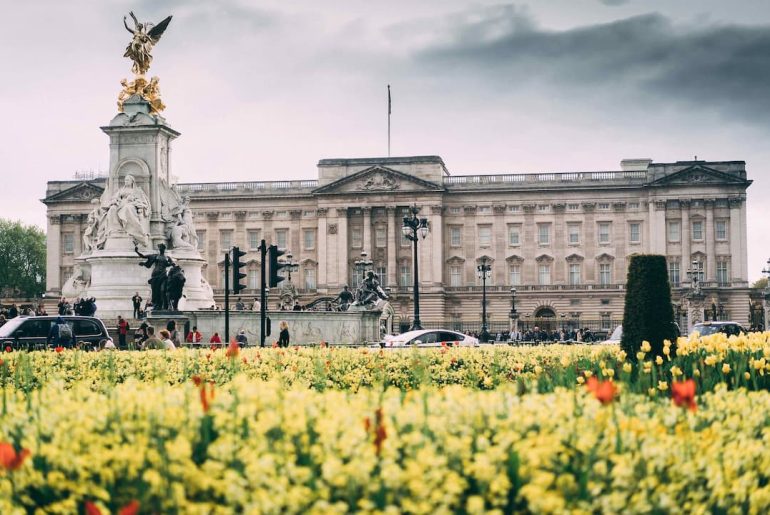
European architecture is a diverse collection of styles that have developed over centuries, influenced by various factors. It is truly impressive, ranging from the remarkable structures of ancient Rome to the intricate details of Gothic cathedrals. Throughout history, European architecture has reflected the time’s social, cultural, and artistic movements, resulting in iconic landmarks and innovative design principles.
In this article, we will look at the evolution of European architecture, highlighting key styles like Romanesque, Gothic, Renaissance, Baroque, Rococo, Neoclassical, and Modernism. Additionally, we will examine current trends and important architectural landmarks that continue to shape the European landscape. Join us on this journey through time as we delve into the fascinating world of European architecture.
The Origins of European Architecture
The ancient Greeks and Romans played a significant role in shaping the roots of European architecture. Who laid the foundation for many architectural principles still used today. These early architectural styles, incorporating columns, arches, and vaults, set the stage for developing European architecture as we know it. Their innovative use of these architectural elements influenced the construction techniques and inspired the aesthetic beauty of buildings throughout history.
Influences on European Architectural Styles
Throughout history, various factors have influenced European architecture, including empires’ rise and fall, religion’s spread, and cultural exchanges between nations. The interplay of these influences has given rise to different architectural styles, each with unique characteristics.
Romanesque and Gothic Architecture in Europe
1. Characteristics of Romanesque Architecture
Romanesque architecture, prevalent from the 9th to the 12th century, is characterized by thick walls, rounded arches, and sturdy construction reminiscent of Roman designs. Its imposing structures, often found in monasteries and castles, convey a sense of strength and solidity.
2. Notable Romanesque Architectural Examples
Notable examples of Romanesque architecture include the Basilica of Saint-Sernin in Toulouse, France, and the Abbey Church of Saint Foy in Conques, France. These awe-inspiring structures showcase the grandeur and craftsmanship of this style.
3. Characteristics of Gothic Architecture
Gothic architecture emerged in the 12th century, characterized by soaring pointed arches, ribbed vaults, and ornate decorations. It sought to create buildings that reached towards the heavens, both in height and in the sense of divine transcendence.
4. Notable Gothic Architectural Examples
Representing the essence of Gothic architecture, the Notre Dame Cathedral in Paris, France, and the Cologne Cathedral in Germany are renowned landmarks. Their intricate stained glass windows and towering spires inspire awe and admiration.

Renaissance Architecture and its Impact on Europe
1. Characteristics of Renaissance Architecture
Renaissance architecture, which flourished in the 15th and 16th centuries, revived classical ideals. It emphasized symmetry, proportion, and the use of domes and columns. This style reflected a return to the architectural principles of ancient Greece and Rome.
2. Notable Renaissance Architectural Examples
The St. Peter’s Basilica in the Vatican City and the Palazzo Vecchio in Florence, Italy, exemplify the grandeur and elegance of Renaissance architecture. These structures showcase this period’s meticulous attention to detail and harmonious proportions.

3. The Influence of Renaissance Architecture across Europe
The impact of Renaissance architecture extended beyond Italy, spreading throughout Europe and influencing the design of palaces, churches, and public buildings. This architectural revolution marked a turning point in European aesthetics and laid the foundation for many subsequent styles.
Baroque and Rococo Architectural Styles
1. Characteristics of Baroque Architecture
Baroque architecture, prevalent in the 17th and early 18th centuries, is characterized by its striking style. It features ornate ornamentation, undulating forms, and elaborate detailing that create a sense of grandeur and theatricality.
2. Notable Baroque Architectural Examples
The Palace of Versailles in France and the Church of Sant’Ivo alla Sapienza in Rome showcase the luxury and exuberance of the Baroque style. These architectural marvels leave no stone unturned in their pursuit of magnificence.
3. Characteristics of Rococo Architecture
Rococo architecture, which emerged in the early 18th century, is characterized by its delicate and playful nature. It features pastel colors, asymmetrical designs, and intricate ornamentation that give buildings a sense of lightness and grace.
4. Notable Rococo Architectural Examples
The Schonbrunn Palace in Vienna, Austria, and the Catherine Palace in Pushkin, Russia, epitomize the elegance and notion of the Rococo style. These architectural gems invite visitors into a world of enchantment and beauty.

Neoclassical and Enlightenment Architecture in Europe
Neoclassical architecture takes the cake regarding architectural styles that make you feel like you’re walking among the gods of Mount Olympus. This style, popular during the 18th and 19th centuries, drew inspiration from the classical architecture of ancient Greece and Rome. Think grand and symmetrical facades, columns, and a lot of marble.
Notable examples of neoclassical architecture include the iconic Brandenburg Gate in Berlin, Germany, and the beautiful Pantheon-inspired British Museum in London, England. These buildings will surely transport you to an era of enlightenment and intellectual curiosity.
Speaking of Enlightenment, let’s remember to mention the impact of Enlightenment ideas on European architecture. During this era, thinkers emphasized reason, logic, and the pursuit of knowledge. Architects embraced these ideas and adopted a more rational approach to design.
Modernism and the Avant-Garde in European Architecture
Fast forward to the 20th century, when architecture sharply turned towards avant-garde and modernism. The emergence of modernist architecture brought a break from tradition, embracing new materials, technologies, and unconventional forms.
Key characteristics of modernist architecture include clean lines, open floor plans, and a rejection of excessive ornamentation. It’s all about functionality and efficiency, baby! The iconic Bauhaus School in Germany perfectly embodies this approach with its sleek, minimalist design and emphasis on craftsmanship.
Not to be outdone, the avant-garde architects pushed the boundaries even further. They experimented with unconventional materials, shapes, and concepts, creating structures that were as visually captivating as they were innovative. Just check out the mind-bending designs of Frank Gehry’s Guggenheim Museum in Bilbao, Spain, and you’ll see what I mean.
Contemporary Trends in European Architecture
Nowadays, sustainability is the name of the game in European architecture. With an increased awareness of environmental issues, architects are focusing on creating aesthetically pleasing and eco-friendly buildings. Think green roofs, solar panels, and materials with a low carbon footprint.

Minimalism and functionality are also gaining traction in contemporary architecture. It’s all about clean, uncluttered spaces that promote a sense of calm and simplicity. Less is more, my friends!
And let’s remember the impact of technology on architecture. With advancements in building design software, virtual reality, and 3D printing, architects can push the boundaries of what’s possible. The sky’s the limit!
Significant European Architectural Landmarks

An article on European architecture would only be complete with mentioning some of the most iconic landmarks that have become synonymous with their respective countries.
The Eiffel Tower in Paris, France, stands tall as a symbol of elegance and romance, while the Colosseum in Rome, Italy, reminds us of the grandeur of the Roman Empire. The Acropolis of Athens, Greece, with its ancient temples, takes us back to the birthplace of democracy. At the same time, St. Basil’s Cathedral in Moscow, Russia, captures the eye with its vibrant and colorful onion domes.
These architectural gems are not just tourist attractions but a testament to Europe’s rich history and culture. So, next time you find yourself strolling through the streets of Europe, take a moment to appreciate the architectural wonders surrounding you. They, indeed, are a sight to behold! In conclusion, European architecture is a testament to human civilization’s ingenuity and creativity.

From ancient ruins to modern masterpieces, it is a living testament to the evolution of architectural styles and the enduring legacy of visionary designers and builders. As we continue to appreciate and preserve these architectural treasures, we also look forward to witnessing new architectural innovations that will shape the future of Europe. By understanding and celebrating European architecture, we gain a deeper appreciation for the beauty, history, and cultural significance that it brings to our lives.
Conclusion
European architecture is a remarkable display of artistic and engineering excellence that has thrived for centuries. European architects have consistently pushed the boundaries of design and craftsmanship, from the majestic Gothic cathedrals that dominate city skylines to the intricate details of Renaissance palaces. The architectural styles found throughout Europe reflect its diverse cultures and rich history.
Whether it’s the grandeur of Baroque architecture in Italy or the simplicity and elegance of Nordic design, each region showcases unique elements influenced by factors like religion, politics, and technological progress. European architecture exhibits aesthetic beauty and demonstrates the seamless integration of human creations with their natural surroundings. This is often evident in the grand boulevards, graceful squares, and carefully planned cities. European architecture continues to inspire architects worldwide due to its timeless charm and significant contribution to global architectural heritage.






